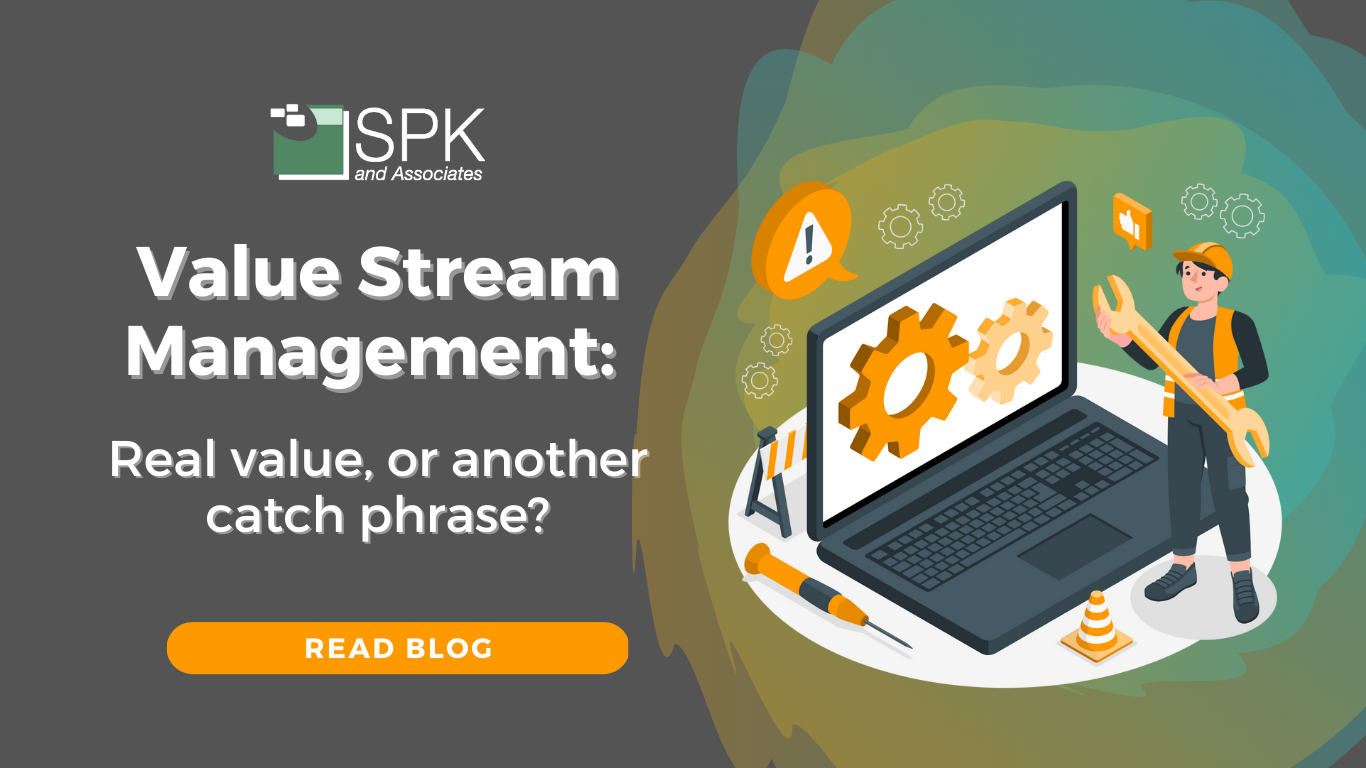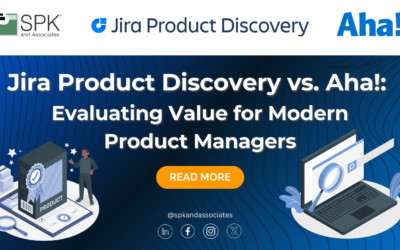The term “Value Stream Management” is not new. In fact, it has been part of the Lean Manufacturing philosophy and practice since 1998. As with many other excellent manufacturing practices, we appropriated the concept in software development and the services industries.
What is Value Stream Management?
Value stream management (VSM) is a lean manufacturing technique that analyzes, designs and manages the flow of materials and information required to bring a product to a customer. Essentially, it embraces the entire workflow, from concept to collecting cash. Additionally, it looks at the flow from the key perspective of value creation for the customer.
In VSM, we:
- Identify the value streams in an organization;
- Map the flow of work through those value streams;
- Identify areas where waste or inefficiency is occurring.
Value Stream Management analyzes each step of the product cycle to determine the value outcomes each step provides (or doesn’t provide). Furthermore, it ignores titles, silos, departments, and all other organizational constructs. Through a transparent and honest lens, Value Stream Management (VSM) focuses on improving the whole system to maximize the product or service value to the customer.
So, what is Value Stream Management? Essentially, value stream management is about looking at a process from start to finish. It’s about ignoring the artificial boundaries in your company and provides a focused perspective on customer value.
Value Stream Management and DevOps
In the world of software engineering, VSM is a natural expansion of DevOps. Why? Because it embraces the same philosophical concepts of delivering value to the customer more efficiently. And, it expands the view out beyond just the research and development (R&D) team.
DevOps is a set of practices that emphasizes collaboration and communication between development and operations teams. The goal of DevOps is to:
- Improve the speed and quality of software delivery by breaking down silos;
- Create a culture of collaboration and continuous improvement.
VSM and DevOps are complementary. VSM provides a framework for analyzing and optimizing value streams, and DevOps provides a set of practices for improving collaboration and communication between teams. Together, VSM and DevOps can help organizations identify and eliminate bottlenecks, reduce waste, and deliver value to customers more quickly and efficiently.
Digital Transformation And VSM
Digital transformation is the process of using digital technologies to fundamentally change how organizations operate, deliver value to customers, and create competitive advantage. Since the goal of digital transformation is to increase efficiency, improve the customer experience, and drive innovation and growth, often through the use of data analytics, automation, artificial intelligence, and other digital technologies, it’s clear that VSM could be a key methodology in this effort.

Recent Findings from CloudBees VSM Survey
CloudBees recently conducted a survey of 600 global senior executives about their view of VSM and how it contributes to digital transformation in their organizations. Unsurprisingly, the overwhelming consensus was that VSM was a critical factor to the success of their digital transformation programs. In fact, 89-90% of those surveyed felt VSM is the key to digital transformation.
However, what was surprising was the same executives were not completely clear on the definition of VSM. CloudBees noted that many confused “Value Stream Management” with “Value Stream Mapping.” These two concepts are closely linked, but they are not the same. So, it highlighted a lack of clarity about what executives viewed as the key to digital transformation.
Roadblocks To Adoption
More interestingly were the factors identified as the roadblocks for VSM in organizations.
- 35% stated the main roadblock was getting mid-level employees committed to the concept.
- 90% stated that a roadblock was lack of patience in waiting for the results to take effect.
It is challenging to get mid-level engineers to adopt new concepts. From their perspective, there are a number of philosophies, catchphrases, or methodologies upper management jumps upon. They have real work to do, real software to release, and often feel the latest methodology gets in the way of the real work.
But in this case, VSM is not just a catchphrase. Or the latest bright, shiny object for executives to pin their hopes upon. Instead, VSM simply makes sense. As with many worthwhile endeavors, it’s not easy to implement, and takes discipline. It can only help to:
- Step back from the silos created in companies to help organize work.
- Look at the process of product development from start to finish transparently and honestly.

It takes more effort to look at one’s work differently. It’s also scary. Perhaps some of the engineer’s work is wasted effort. The engineer might be worried about losing his or her job. Therefore, the commitment to VSM must start with the executives and be consistent and steady. It will take time. But the results will come. When you focus on improving the system and full value stream instead of driving functional efficiency in individual silos, you naturally accelerate time to value.
Getting Started With VSM in Software Delivery
So, how can an organization get started with VSM?
-
Identify the value streams:
First, identify the value streams in your software engineering team. A value stream is the sequence of activities that a product or service goes through, from conception to delivery to the customer. In software engineering, value streams could include requirements gathering, design, development, testing, and deployment.
-
Map the value stream (or value stream mapping):
Once you have identified the value streams, pick one and map the flow of work through it. This involves creating a visual representation of the value stream. This is a helpful step that enables you to identify areas of waste or inefficiency. Teams map steps as either value-adding or non-value-adding from the customer’s standpoint. The purpose of this is to root out items that don’t add value for the customer.
-
Measure and analyze the value stream:
Next, you need to measure and analyze the flow of work through it. This involves identifying metrics including lead time, cycle time, and work in progress (WIP). This helps you identify flow of work optimization. Focus on the steps with handoffs and sign-offs, where most inefficiencies lie. Metrics, or quantitative measurement, is key.
-
Identify areas for improvement:
Based on your analysis, pinpoint areas to optimize the flow of work that reduce waste, improve efficiency, and increase the speed at which value is delivered to customers.
-
Implement changes:
Finally, you need to implement the changes. This may involve introducing new tools, processes, or practices, or making changes to existing ones.
-
Monitor changes and reevaluate:
VSM is an iterative methodology, much like Agile. It requires periodic review and re-analysis since business and customers change continually.
As with most organizational change, it’s a good idea to start small and focus on one value stream at a time. Then, as you start to gain experience and see the benefits of VSM. In parallel, you can gradually expand the scope of your VSM efforts to other value streams.
Conclusion
Value stream management isn’t just another business catchphrase. Instead, it is a lean manufacturing technique that embraces the entire workflow, from concept to collecting cash. Its core purpose is to address the value creation for the customer. Additionally, VSM is complementary to DevOps and could be a key methodology in your business’s digital transformation.
Value stream management allows you to focus on improving the system and full value stream instead of driving functional efficiency in individual silos. Therefore, you naturally accelerate time to value. However, VSM can be complex to implement. And it requires a top-down approach, or partnering with experts in VSM. At SPK, we have been delivering value stream management in our own business, and our clients, for nearly two decades. So, if you need support to implement VSM in your business, contact us now.







